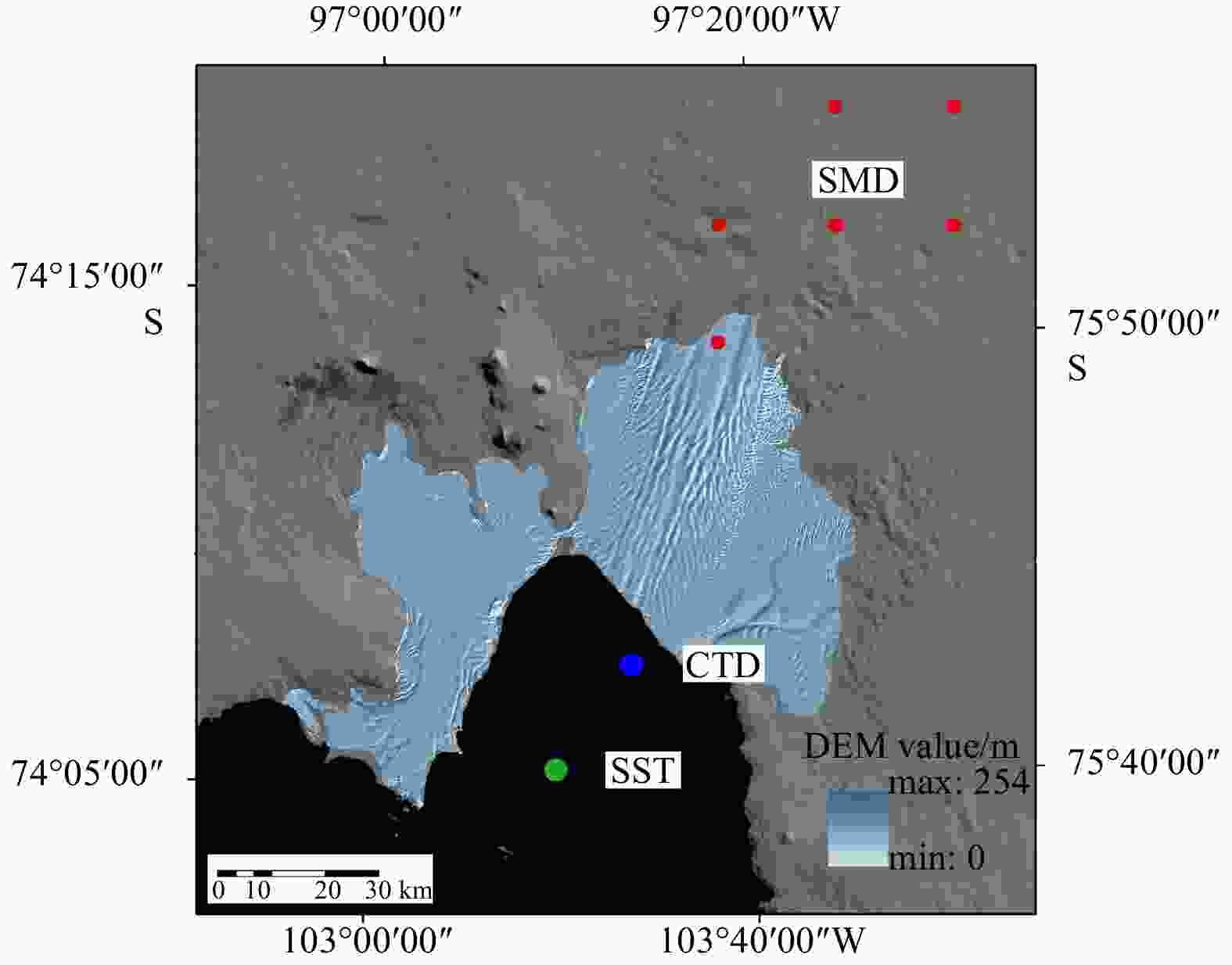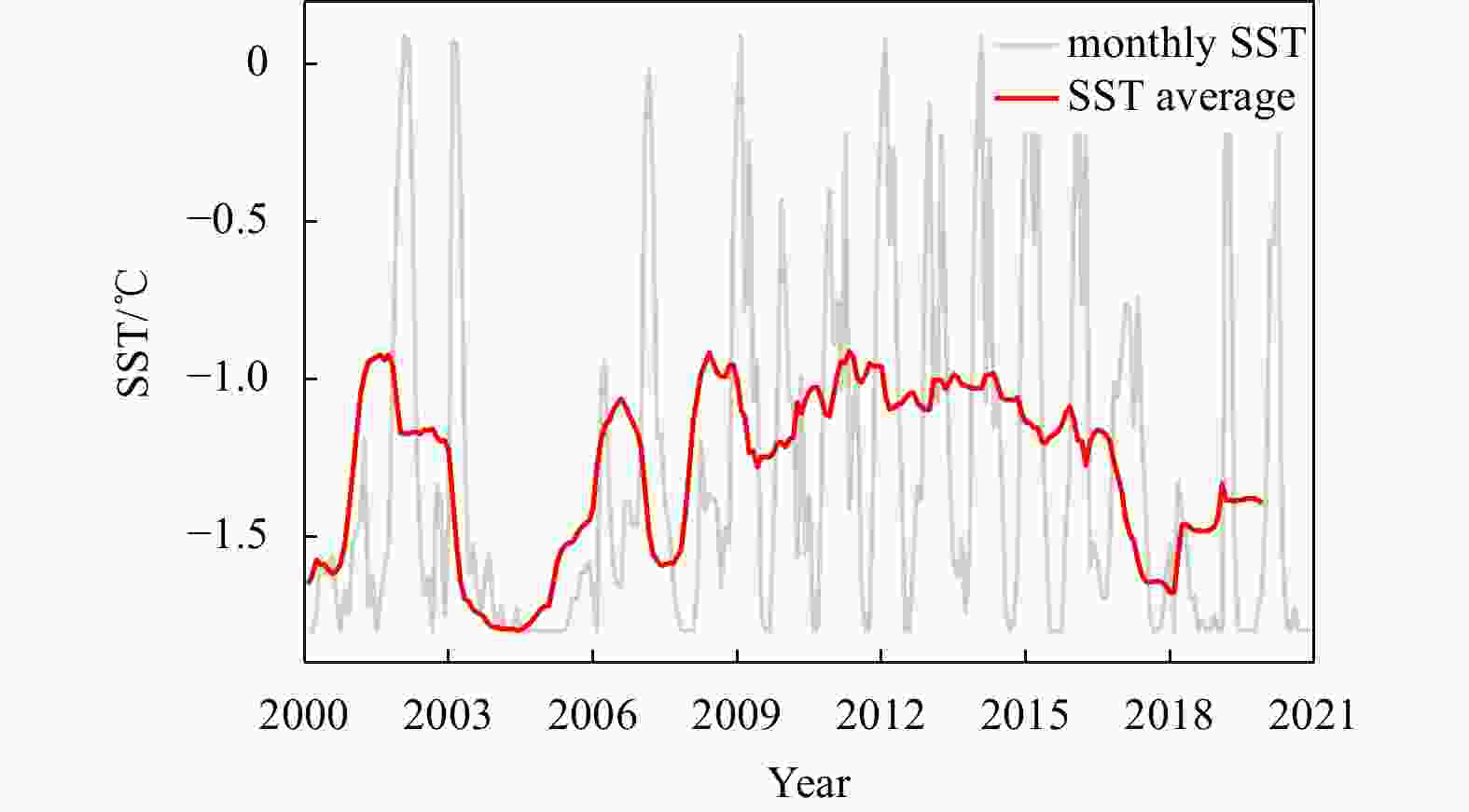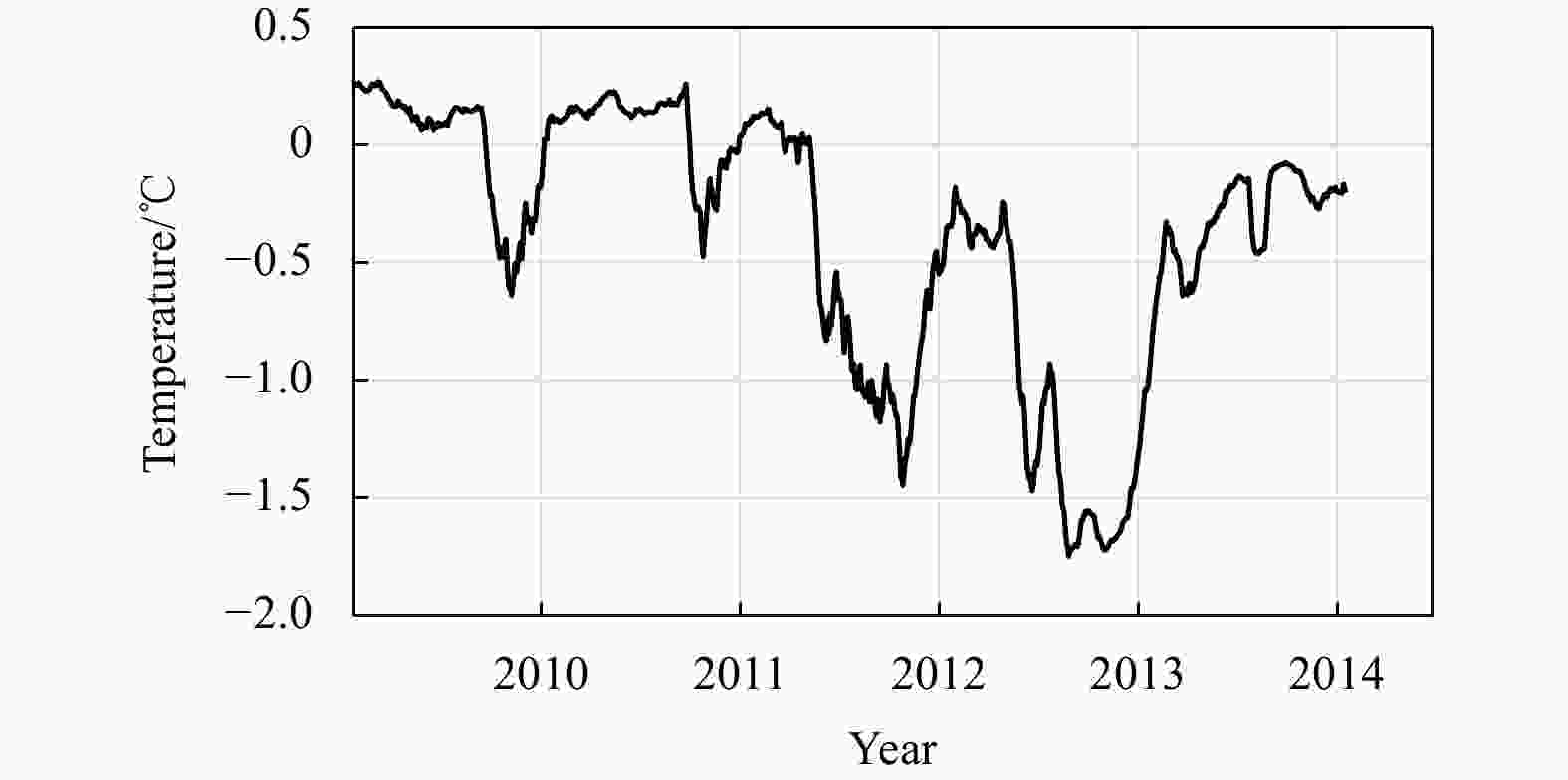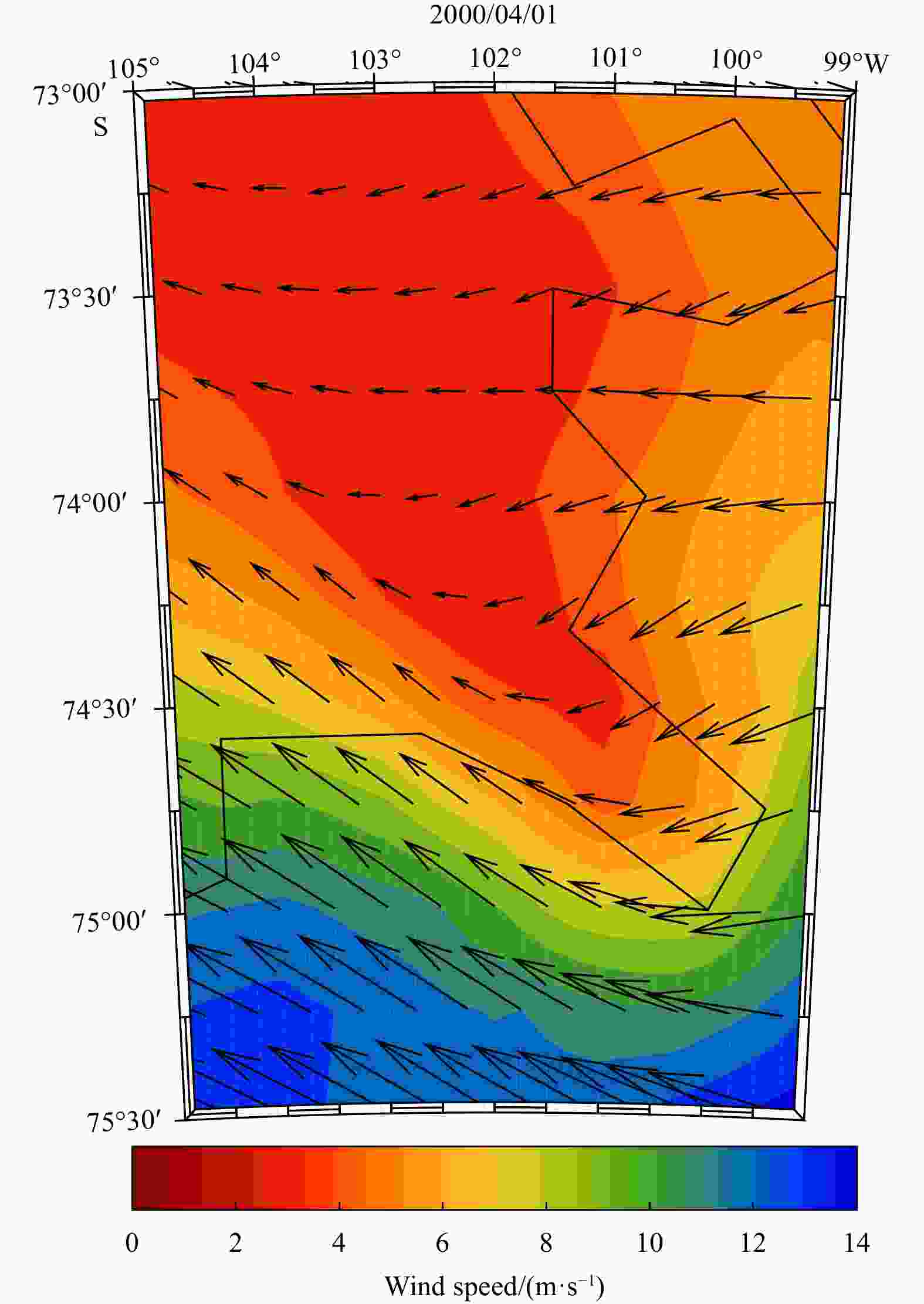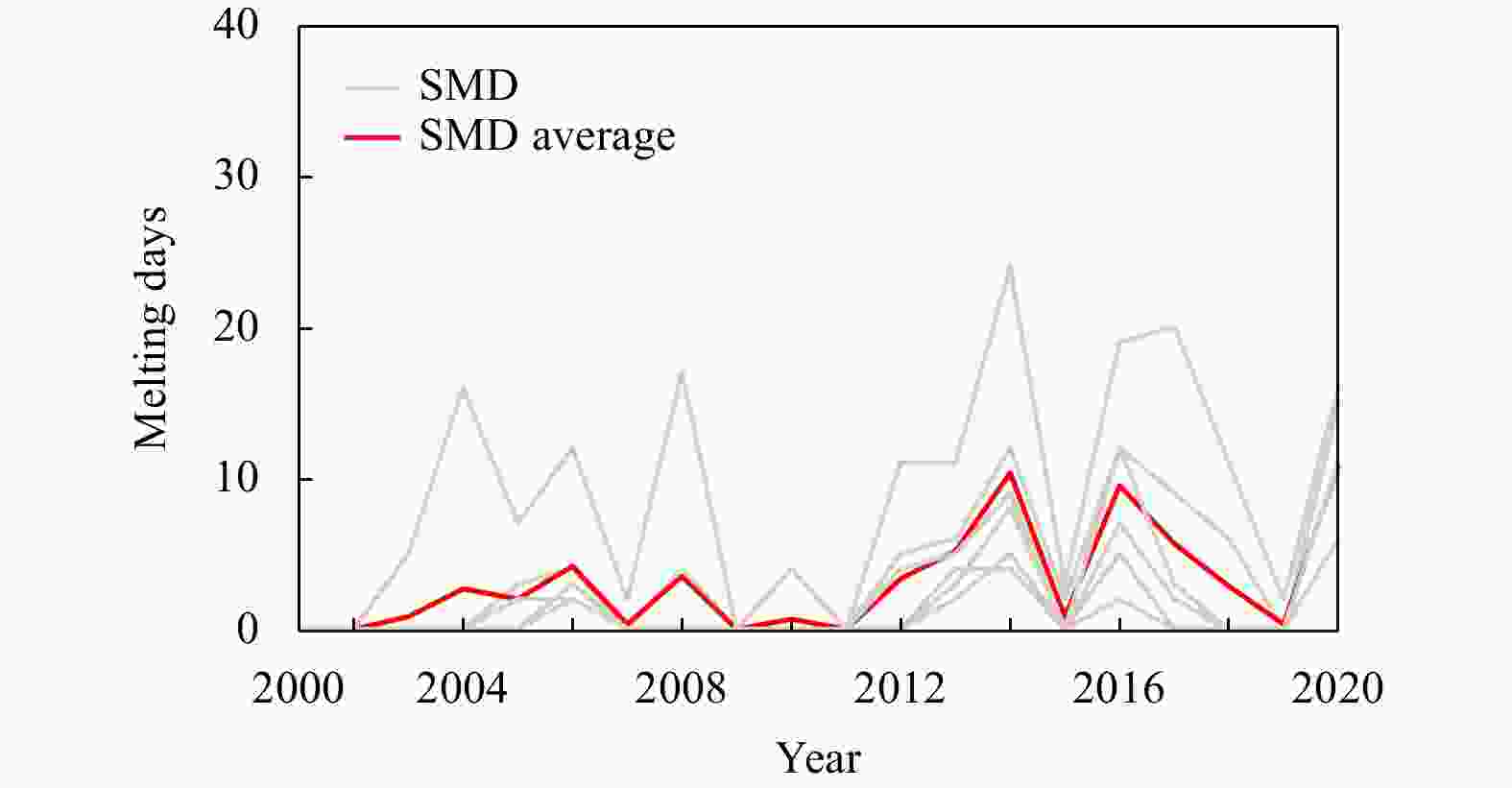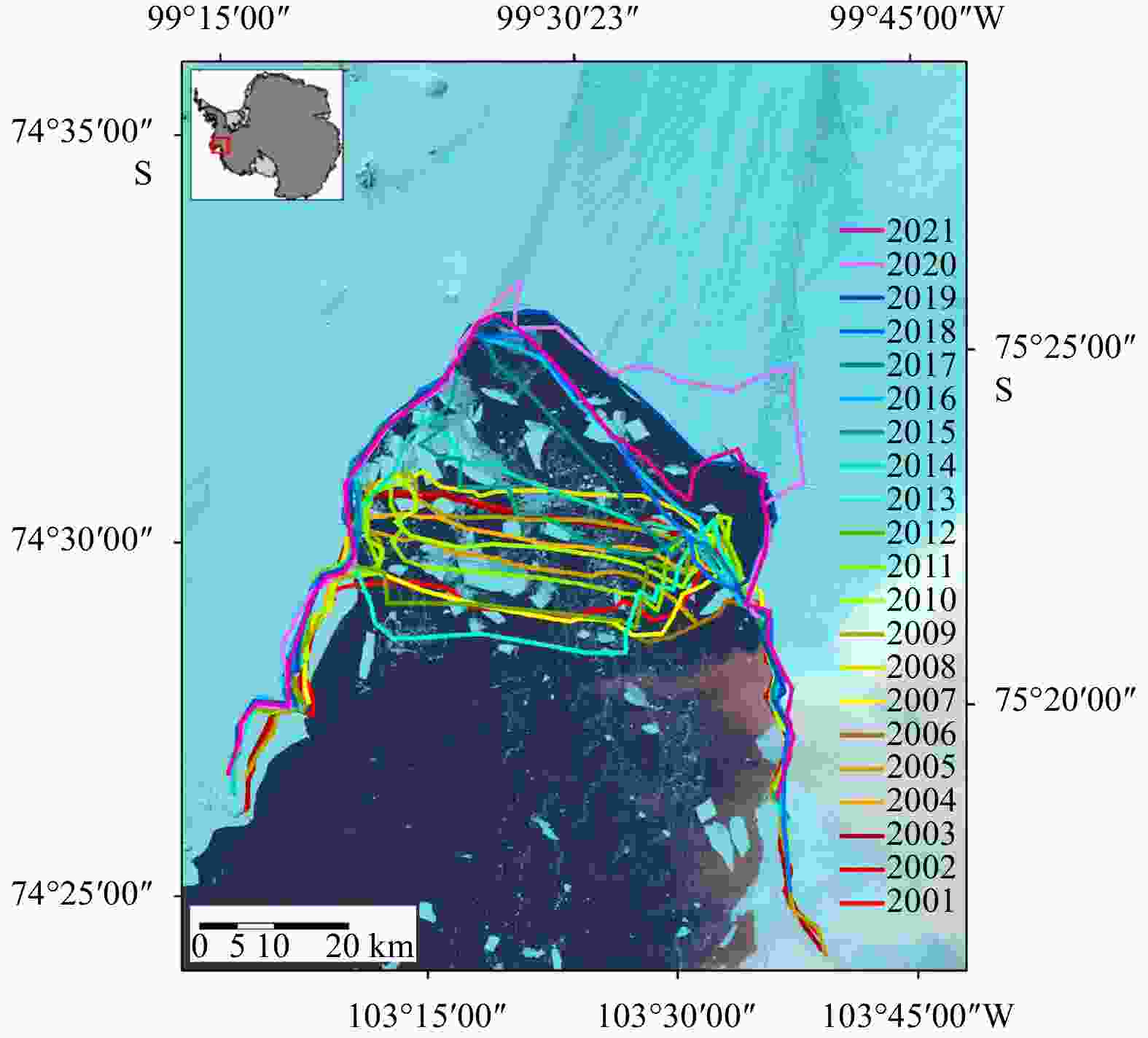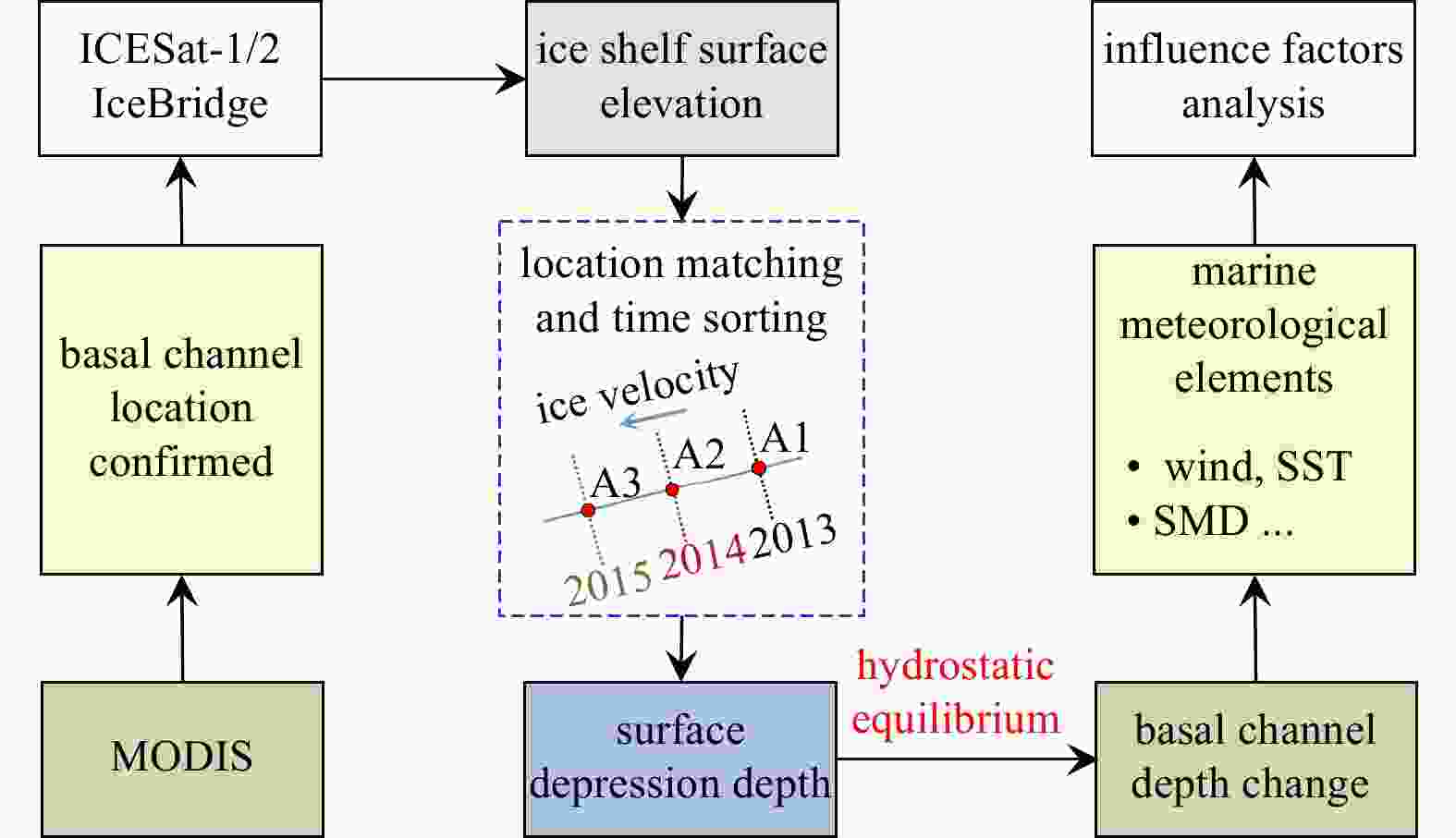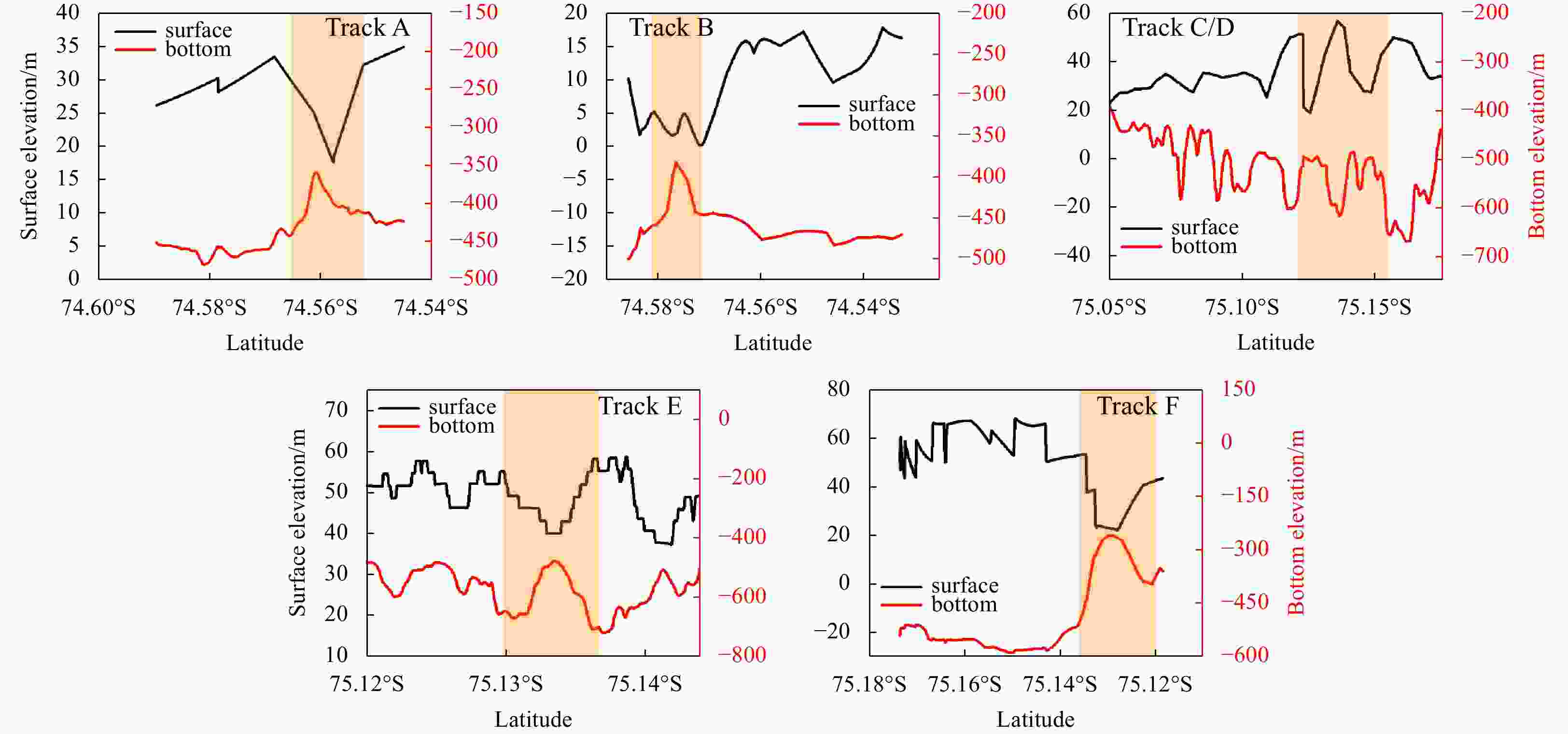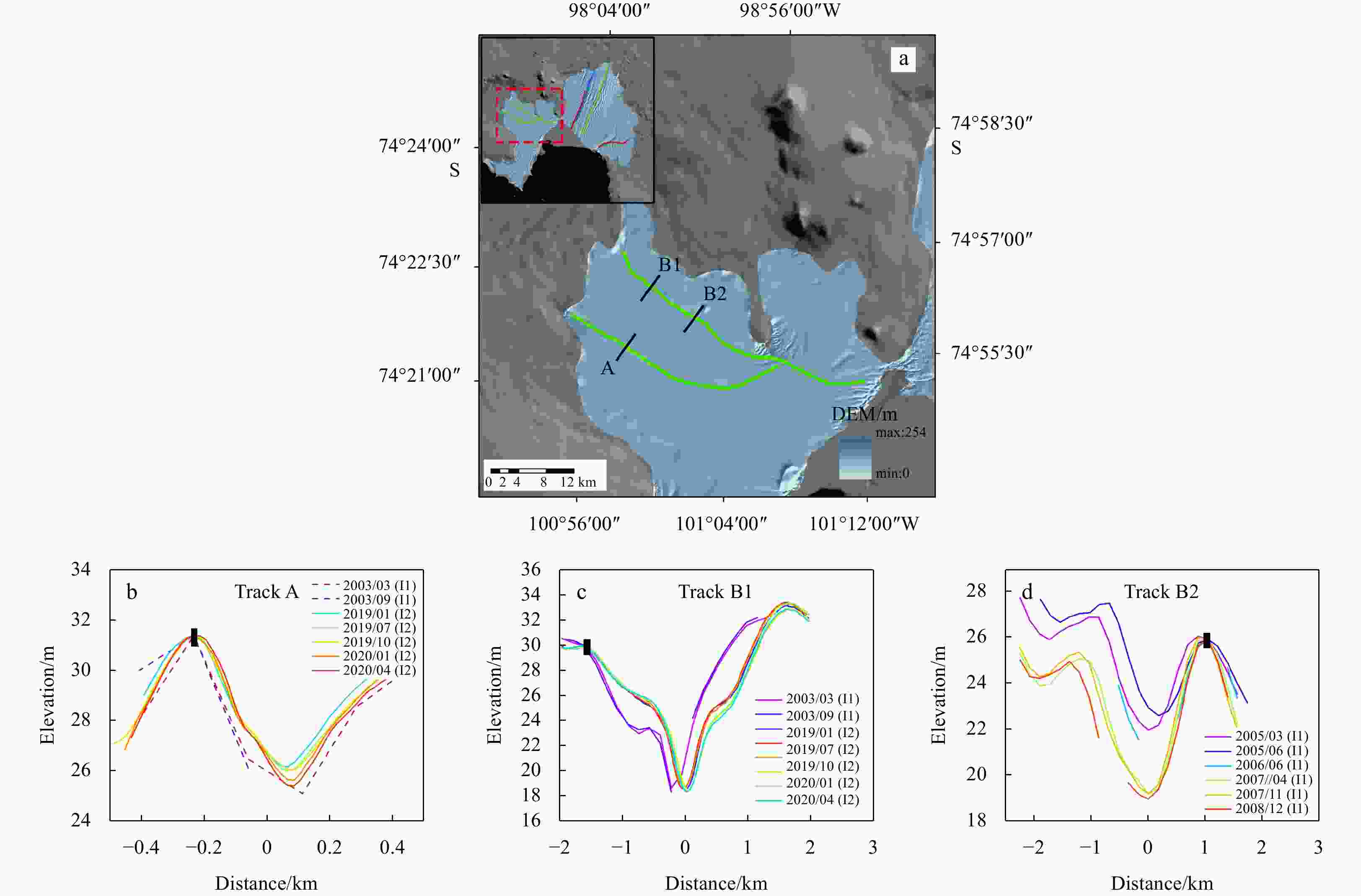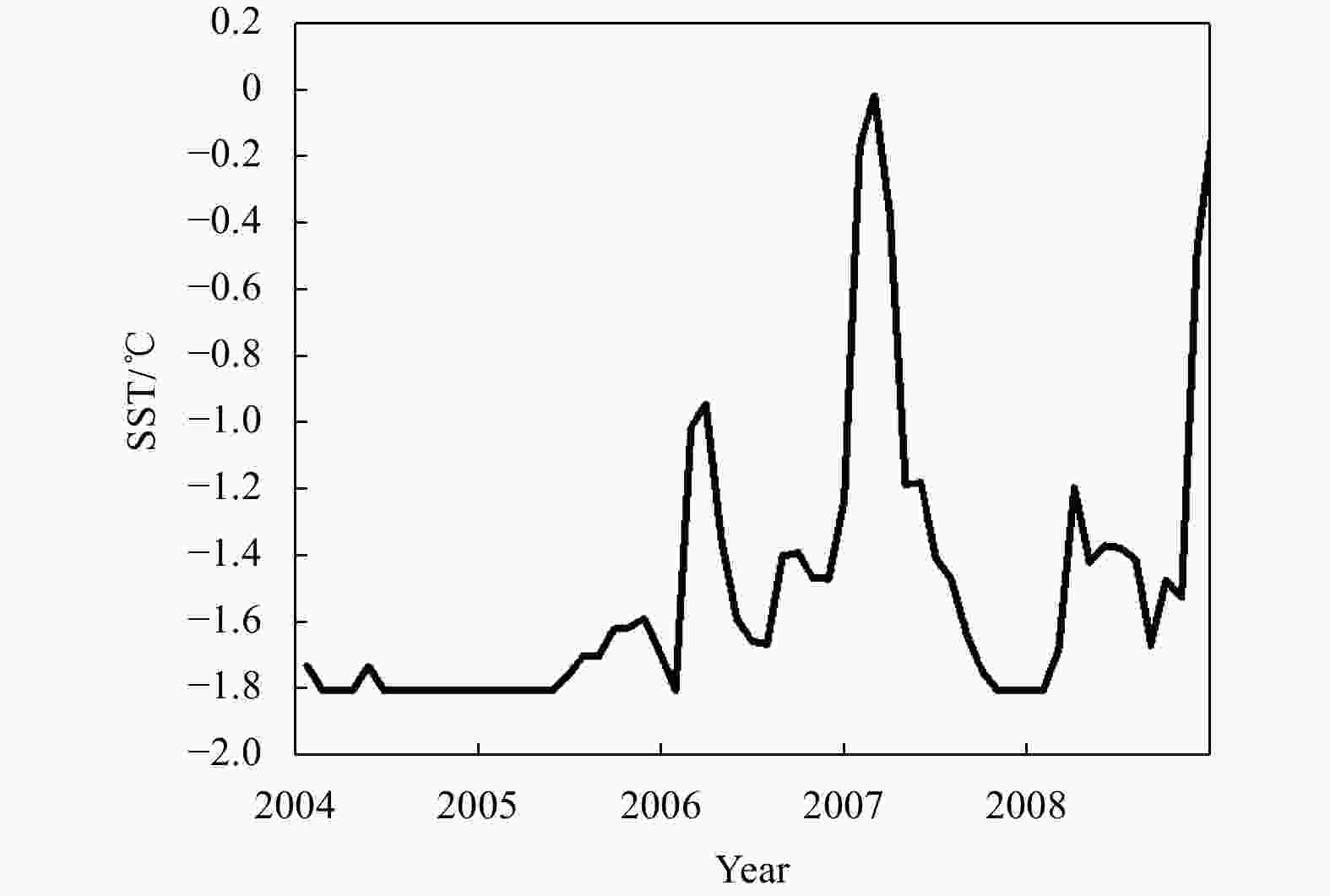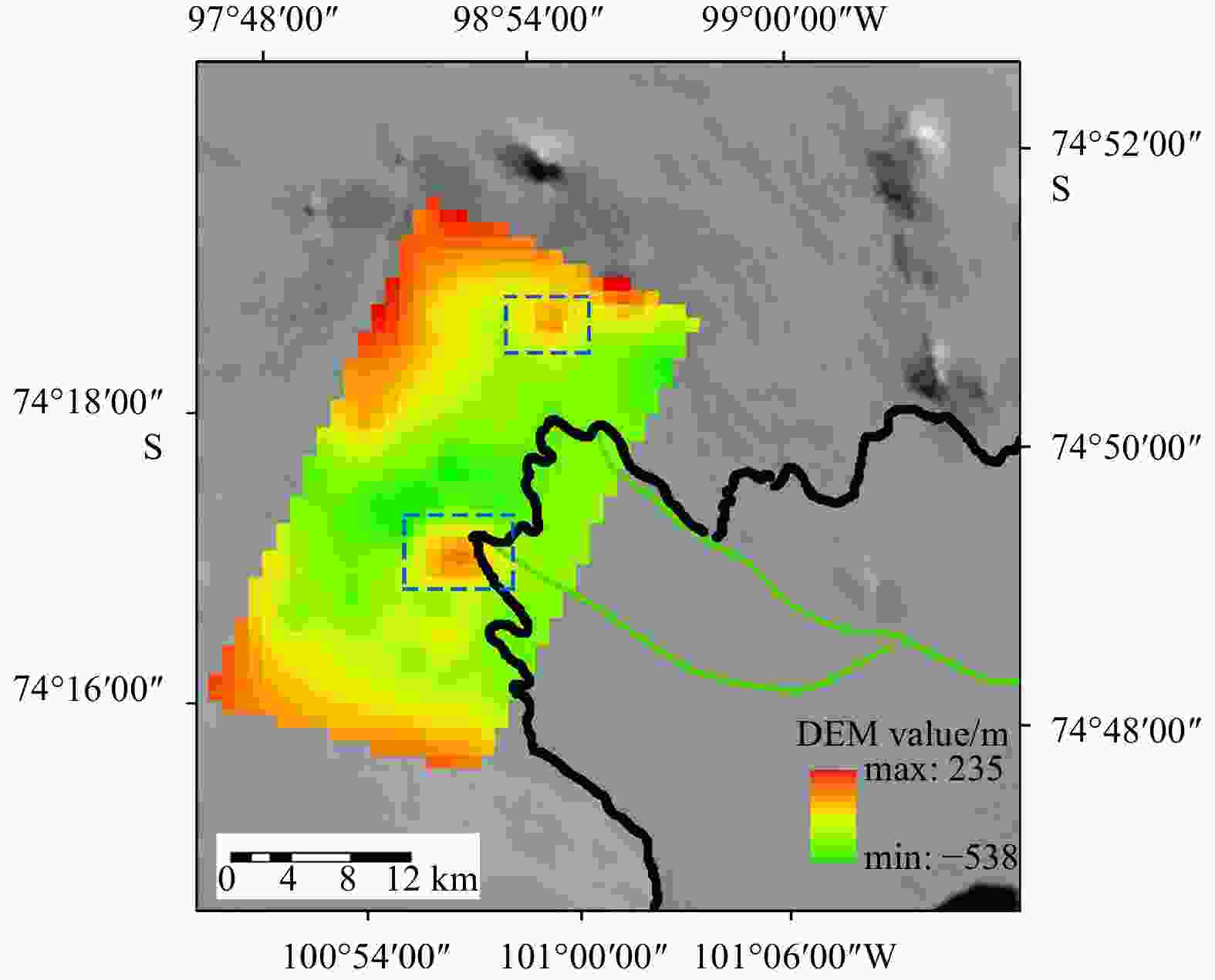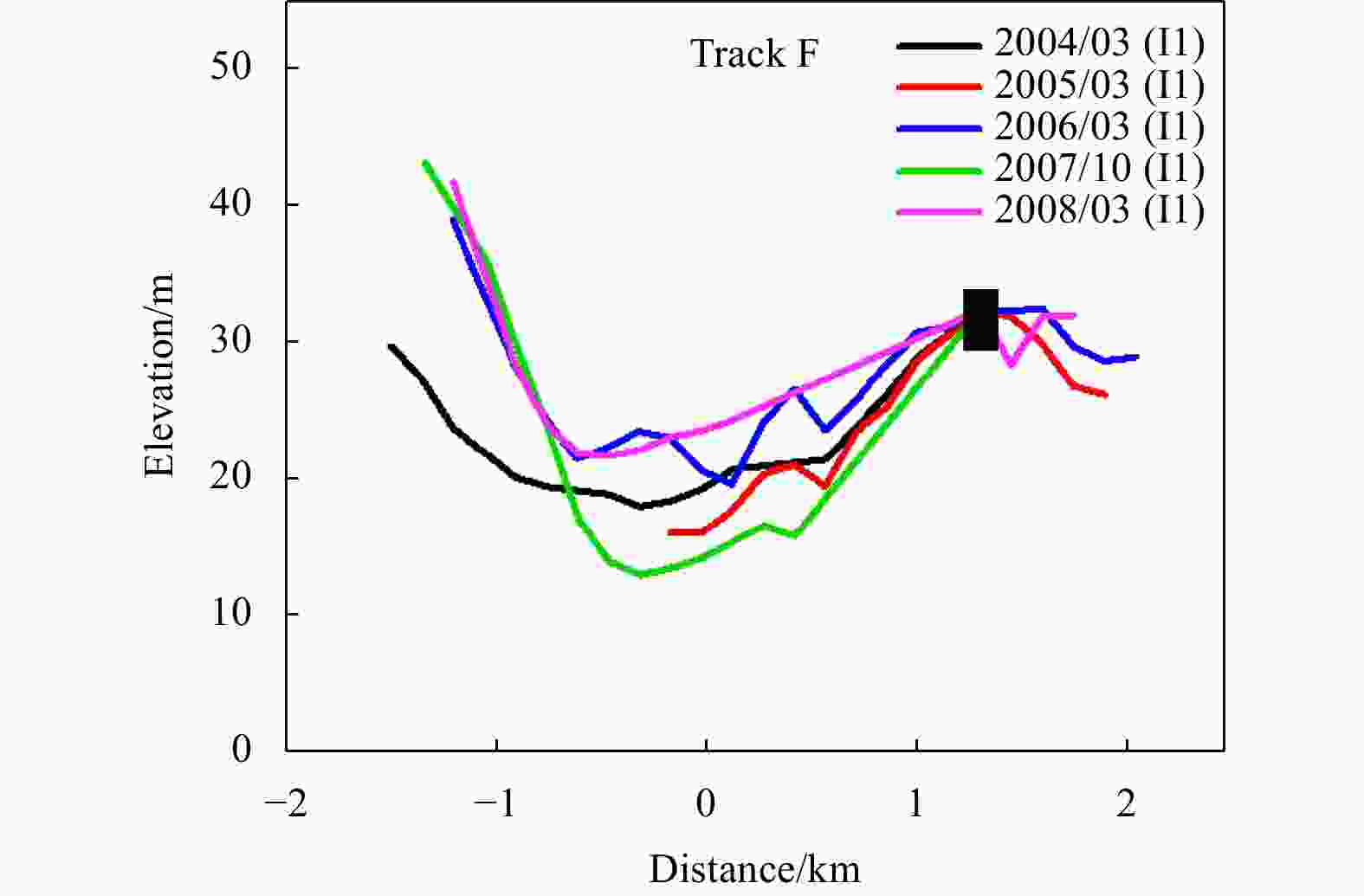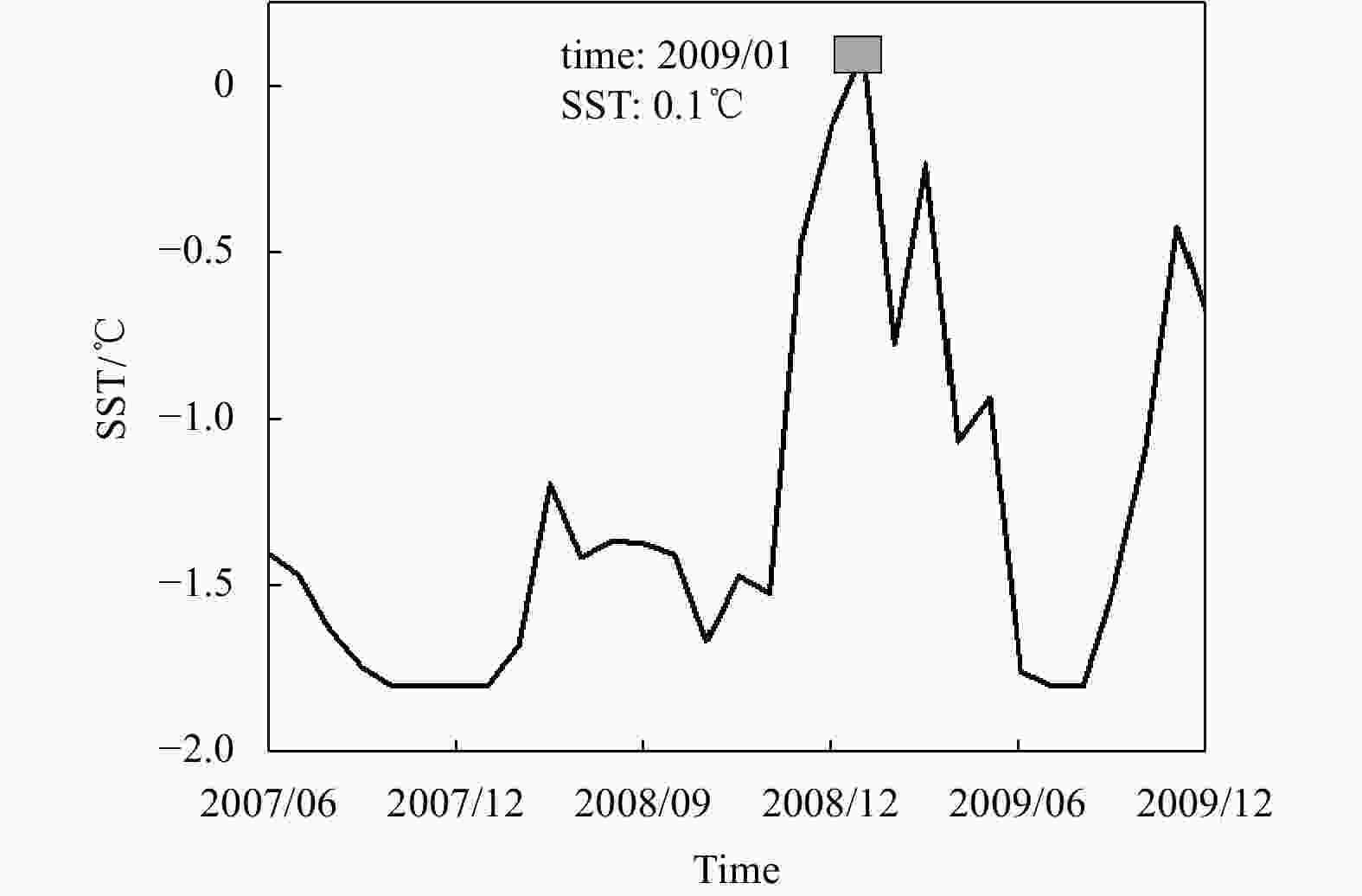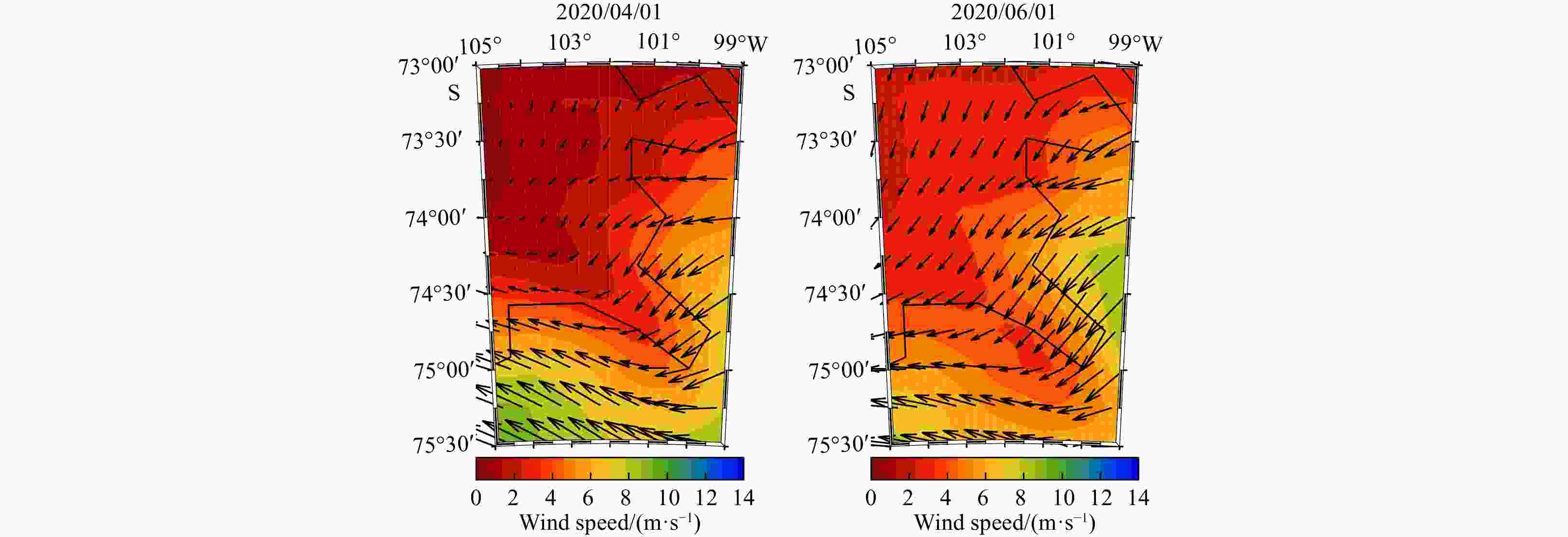The morphological changes of basal channels based on multi-source remote sensing data at the Pine Island Ice Shelf
-
Abstract: The basal channel is a detailed morphological feature of the ice shelf caused by uneven basal melting. This kind of specifically morphology is widely distributed in polar ice shelves. It is an important research object of sea-ice interaction and plays a vital role in studying the relationship between the ice sheet/ice shelf and global warming. In this paper, high-resolution remote sensing image and ice penetration data were combined to extract the basal channel of the Pine Island Ice Shelf. The depth variation of Pine Island Ice Shelf in the recent 20 years was analyzed and discussed by using ICESat-1, ICESat-2, and IceBridge data. Combined with relevant marine meteorological elements (sea surface temperature, surface melting days, circumpolar deep water and wind) to analyze the basal channel changes, the redistribution of ocean heat is considered to be the most important factor affecting the evolution and development of the basal channel.
-
Key words:
- basal channel /
- Pine Island Ice Shelf /
- digital elevation model (DEM) /
- ICESat /
- IceBridge
-
Figure 1. Pine Island Ice Shelf. The box in the upper left figure indicates the location of the study area. The colored lines in the figure correspond to different types of basal channels. The blue base layer represents surface elevation data for Pine Island Ice Shelf. The short black lines (A–F) represent the OIB flight paths.
Figure 6. SMD at Pine Island Ice Shelf. Solid gray lines represent the SMD at 6 points as shown in Fig. 2. The red line is the average number of melting days at the 6 locations.
Figure 9. Schematic diagram of determining the basal channel position through OIB data, A–F corresponding to the position of the black letter mark in Fig. 1. The orange area represents the position and correspondence between the basal channel and the surface depression.
Figure 10. Sampling location of grounding-line-sourced basal channels of the east branch (a), and orresponding to the elevation time series of the surface depression at transects areas located in a using ICESat-1 (I1) and ICESat-2 (I2) (b−d). The red dotted box in the upper left corner marks the approximate location of the east branch. The black square represents the uniform elevation point.
Figure 11. Monthly temperature change curve from 2004 to 2008. The location is shown in Fig. 2 with green dot.
Figure 13. The elevation time series of the surface depression at Transect F is shown in Fig. 1 by using ICESat-1 (I1).
Figure 14. The elevation time series of the surface depression at transects areas of C−E is shown in Fig. 1 by combining ICESat-1 (I1), ICESat-2 (I2), and OIB (IB). a. Grounding-line-sourced basal channel. b. Subglacially-sourced basal channel. c. Ocean-sourced basal channel.
Figure 16. SST during 2007–2009. The location is shown in Fig. 2 with green dot.
Table 1. Calving area and calving front retreat distance of Pine Island Ice Shelf
Year Retreat distance/km Calving area/km2 2001–2002 12 494 2007–2008 16 634 2012–2013 28 762 2015–2016 19 455 2017–2018 5 140 2018–2019 13 310 2019–2020 16 203 -
Alley K E, Scambos T A, Siegfried M R, et al. 2016. Impacts of warm water on Antarctic ice shelf stability through basal channel formation. Nature Geoscience, 9(4): 290–293. doi: 10.1038/Ngeo2675 Aoki S, Takahashi T, Yamazaki K, et al. 2022. Warm surface waters increase Antarctic ice shelf melt and delay dense water formation. Communications Earth & Environment, 3: 142. doi: 10.1038/s43247-022-00456-z Bindschadler R, Vaughan D G, Vornberger P. 2011. Variability of basal melt beneath the Pine Island Glacier ice shelf, West Antarctica. Journal of Glaciology, 57(204): 581–595. doi: 10.3189/002214311797409802 Blanchard-Wrigglesworth E, Roach L A, Donohoe A, et al. 2021. Impact of winds and southern ocean SSTs on Antarctic sea ice trends and variability. Journal of Climate, 34(3): 949–965. doi: 10.1175/Jcli-D-20-0386.1 Borsa A A, Moholdt G, Fricker H A, et al. 2014. A range correction for ICESat and its potential impact on ice-sheet mass balance studies. The Cryosphere, 8(2): 345–357. doi: 10.5194/tc-8-345-2014 Borstad C P, Rignot E, Mouginot J, et al. 2013. Creep deformation and buttressing capacity of damaged ice shelves: theory and application to Larsen C ice shelf. The Cryosphere, 7(6): 1931–1947. doi: 10.5194/tc-7-1931-2013 Brabyn L, Stichbury G. 2020. Calculating the surface melt rate of Antarctic glaciers using satellite-derived temperatures and stream flows. Environmental Monitoring and Assessment, 192(7): 440. doi: 10.1007/s10661-020-08396-x Breton D J, Baker I, Cole D M. 2016. Microstructural evolution of polycrystalline ice during confined creep testing. Cold Regions Science and Technology, 127: 25–36. doi: 10.1016/j.coldregions.2016.03.009 Brucker L, Markus T. 2013. Arctic-scale assessment of satellite passive microwave-derived snow depth on sea ice using Operation IceBridge airborne data. Journal of Geophysical Research: Oceans, 118(6): 2892–2905. doi: 10.1002/jgrc.20228 Cazenave A, Llovel W. 2010. Contemporary sea level rise. Annual Review of Marine Science, 2: 145–173. doi: 10.1146/annurev-marine-120308-081105 Chartrand A M, Howat I M. 2020. Basal channel evolution on the Getz Ice Shelf, West Antarctica. Journal of Geophysical Research: Earth Surface, 125(9): e2019JF005293. doi: 10.1029/2019JF005293 Christmann J, Plate C, Müller R, et al. 2016. Viscous and viscoelastic stress states at the calving front of Antarctic ice shelves. Annals of Glaciology, 57(73): 10–18. doi: 10.1017/aog.2016.18 Costi J, Arigony-Neto J, Braun M, et al. 2018. Estimating surface melt and runoff on the Antarctic Peninsula using ERA-Interim reanalysis data. Antarctic Science, 30(6): 379–393. doi: 10.1017/S0954102018000391 Derkani M H, Alberello A, Nelli F, et al. 2021. Wind, waves, and surface currents in the Southern Ocean: observations from the Antarctic Circumnavigation Expedition. Earth System Science Data, 13(3): 1189–1209. doi: 10.5194/essd-13-1189-2021 Dinniman M S, Klinck J M, Smith W O. 2011. A model study of Circumpolar Deep Water on the West Antarctic Peninsula and Ross Sea continental shelves. Deep-Sea Research Part II: Topical Studies in Oceanography, 58(13–16): 1508–1523, Donat-Magnin M, Jourdain N C, Kittel C, et al. 2021. Future surface mass balance and surface melt in the Amundsen sector of the West Antarctic Ice Sheet. The Cryosphere, 15(2): 571–593. doi: 10.5194/tc-15-571-2021 Dong Yuting, Zhao Ji, Floricioiu D, et al. 2021. High-resolution topography of the Antarctic Peninsula combining the TanDEM-X DEM and Reference Elevation Model of Antarctica (REMA) mosaic. The Cryosphere, 15(9): 4421–4443. doi: 10.5194/tc-15-4421-2021 Dutrieux P, Stewart C, Jenkins A, et al. 2014. Basal terraces on melting ice shelves. Geophysical Research Letters, 41(15): 5506–5513. doi: 10.1002/2014gl060618 Dutrieux P, Vaughan D G, Corr H F J, et al. 2013. Pine Island glacier ice shelf melt distributed at kilometre scales. The Cryosphere, 7(5): 1543–1555. doi: 10.5194/tc-7-1543-2013 Fair Z, Flanner M, Brunt K M, et al. 2020. Using ICESat-2 and Operation IceBridge altimetry for supraglacial lake depth retrievals. The Cryosphere, 14(11): 4253–4263. doi: 10.5194/tc-14-4253-2020 Farrell S L, Kurtz N, Connor L N, et al. 2012. A first assessment of IceBridge snow and ice thickness data over Arctic Sea Ice. IEEE Transactions on Geoscience and Remote Sensing, 50(6): 2098–2111. doi: 10.1109/Tgrs.2011.2170843 Fretwell P, Pritchard H D, Vaughan D G, et al. 2013. Bedmap2: improved ice bed, surface and thickness datasets for Antarctica. The Cryosphere, 7(1): 375–393. doi: 10.5194/tc-7-375-2013 Fricker H A, Padman L. 2006. Ice shelf grounding zone structure from ICESat laser altimetry. Geophysical Research Letters, 33(15): L15502. doi: 10.1029/2006gl026907 Fürst J J, Durand G, Gillet-Chaulet F, et al. 2016. The safety band of Antarctic ice shelves. Nature Climate Change, 6(5): 479–482. doi: 10.1038/Nclimate2912 Gladish C V, Holland D M, Holland P R, et al. 2012. Ice-shelf basal channels in a coupled ice/ocean model. Journal of Glaciology, 58(212): 1227–1244. doi: 10.3189/2012JoG12J003 Greene C A, Blankenship D D, Gwyther D E, et al. 2017. Wind causes Totten Ice Shelf melt and acceleration. Science Advances, 3(11): e1701681. doi: 10.1126/sciadv.1701681 Haseloff M, Sergienko O V. 2018. The effect of buttressing on grounding line dynamics. Journal of Glaciology, 64(245): 417–431. doi: 10.1017/jog.2018.30 Hofstede C, Beyer S, Corr H, et al. 2021. Evidence for a grounding line fan at the onset of a basal channel under the ice shelf of Support Force Glacier, Antarctica, revealed by reflection seismics. The Cryosphere, 15(3): 1517–1535. doi: 10.5194/tc-15-1517-2021 Howat I M, Porter C, Smith B E, et al. 2019. The reference elevation model of Antarctica. The Cryosphere, 13(2): 665–674. doi: 10.5194/tc-13-665-2019 Jacobs S S, Jenkins A, Giulivi C F, et al. 2011. Stronger ocean circulation and increased melting under Pine Island Glacier ice shelf. Nature Geoscience, 4(8): 519–523. doi: 10.1038/Ngeo1188 Jenkins A, Dutrieux P, Jacobs S S, et al. 2010. Observations beneath Pine Island Glacier in West Antarctica and implications for its retreat. Nature Geoscience, 3(7): 468–472. doi: 10.1038/Ngeo890 Johnson A, Hock R, Fahnestock M. 2022. Spatial variability and regional trends of Antarctic ice shelf surface melt duration over 1979–2020 derived from passive microwave data. Journal of Glaciology, 68(269): 533–546. doi: 10.1017/jog.2021.112 Joughin I, Smith B E, Holland D M. 2010. Sensitivity of 21st century sea level to ocean-induced thinning of Pine Island Glacier, Antarctica. Geophysical Research Letters, 37(20): L20502. doi: 10.1029/2010gl044819 Kurtz N T, Farrell S L. 2011. Large-scale surveys of snow depth on Arctic sea ice from Operation IceBridge. Geophysical Research Letters, 38(20): L20505. doi: 10.1029/2011gl049216 Lilien D A, Joughin I, Smith B, et al. 2019. Melt at grounding line controls observed and future retreat of Smith, Pope, and Kohler glaciers. The Cryosphere, 13(11): 2817–2834. doi: 10.5194/tc-13-2817-2019 Liu Yan, Moore J C, Cheng Xiao, et al. 2015. Ocean-driven thinning enhances iceberg calving and retreat of Antarctic ice shelves. Proceedings of the National Academy of Sciences of the United States of America, 112(11): 3263–3268. doi: 10.1073/pnas.1415137112 Mankoff K D, Jacobs S S, Tulaczyk S M, et al. 2012. The role of Pine Island Glacier ice shelf basal channels in deep-water upwelling, polynyas and ocean circulation in Pine Island Bay, Antarctica. Annals of Glaciology, 53(60): 123–128. doi: 10.3189/2012AoG60A062 Marsh O J, Fricker H A, Siegfried M R, et al. 2016. High basal melting forming a channel at the grounding line of Ross Ice Shelf, Antarctica. Geophysical Research Letters, 43(1): 250–255. doi: 10.1002/2015gl066612 Mayer C, Schaffer J, Hattermann T, et al. 2018. Large ice loss variability at Nioghalvfjerdsfjorden Glacier, Northeast-Greenland. Nature Communications, 9: 2768. doi: 10.1038/s41467-018-05180-x Meierbachtol T, Harper J, Humphrey N. 2013. Basal drainage system response to increasing surface melt on the Greenland ice sheet. Science, 341(6147): 777–779. doi: 10.1126/science.1235905 Millgate T, Holland P R, Jenkins A, et al. 2013. The effect of basal channels on oceanic ice-shelf melting. Journal of Geophysical Research: Oceans, 118(12): 6951–6964. doi: 10.1002/2013jc009402 Mouginot J, Rignot E, Scheuchl B, et al. 2015. Fast retreat of Zachariae Isstrom, northeast Greenland. Science, 350(6266): 1357–1361. doi: 10.1126/science.aac7111 Nakayama Y, Timmermann R, Schröder M, et al. 2014. On the difficulty of modeling Circumpolar Deep Water intrusions onto the Amundsen Sea continental shelf. Ocean Modelling, 84: 26–34. doi: 10.1016/j.ocemod.2014.09.007 Noh M J, Howat I M. 2017. The surface extraction from TIN based search-space minimization (SETSM) algorithm. ISPRS Journal of Photogrammetry and Remote Sensing, 129: 55–76. doi: 10.1016/j.isprsjprs.2017.04.019 Oza S R. 2015. Spatial-temporal patterns of surface melting observed over Antarctic ice shelves using scatterometer data. Antarctic Science, 27(4): 403–410. doi: 10.1017/S0954102014000832 Pegler S S. 2018. Marine ice sheet dynamics: the impacts of ice-shelf buttressing. Journal of Fluid Mechanics, 857: 605–647. doi: 10.1017/jfm.2018.741 Pritchard H D, Ligtenberg S R M, Fricker H A, et al. 2012. Antarctic ice-sheet loss driven by basal melting of ice shelves. Nature, 484(7395): 502–505. doi: 10.1038/nature10968 Rignot E, Mouginot J. 2012. Ice flow in Greenland for the international polar year 2008–2009. Geophysical Research Letters, 39(11): L11501. doi: 10.1029/2012gl051634 Rignot E, Steffen K. 2008. Channelized bottom melting and stability of floating ice shelves. Geophysical Research Letters, 35(2): L02503. doi: 10.1029/2007gl031765 Sergienko O V. 2013. Basal channels on ice shelves. Journal of Geophysical Research: Earth Surface, 118(3): 1342–1355. doi: 10.1002/jgrf.20105 Song Min, Cole D M, Baker I. 2006a. Investigation of Newtonian creep in polycrystalline ice. Philosophical Magazine Letters, 86(12): 763–771. doi: 10.1080/09500830601023787 Song Min, Cole D M, Baker I. 2006b. An investigation of the effects of particles on creep of polycrystalline ice. Scripta Materialia, 55(1): 91–94. doi: 10.1016/j.scriptamat.2006.03.029 Stewart A L, Chi Xiaoyang, Solodoch A, et al. 2021. High-frequency fluctuations in Antarctic bottom water transport driven by southern ocean winds. Geophysical Research Letters, 48(17): e2021GL094569. doi: 10.1029/2021GL094569 Stewart C L, Christoffersen P, Nicholls K W, et al. 2019. Basal melting of Ross Ice Shelf from solar heat absorption in an ice-front polynya. Nature Geoscience, 12(6): 435–440. doi: 10.1038/s41561-019-0356-0 Sun Weiwei, Wang Ruisheng. 2018. Fully convolutional networks for semantic segmentation of very high resolution remotely sensed images combined with DSM. IEEE Geoscience and Remote Sensing Letters, 15(3): 474–478. doi: 10.1109/Lgrs.2018.2795531 Thoma M, Jenkins A, Holland D, et al. 2008. Modelling Circumpolar Deep Water intrusions on the Amundsen Sea continental shelf, Antarctica. Geophysical Research Letters, 35(18): L18602. doi: 10.1029/2008gl034939 Tschudi M A, Stroeve J C, Stewart J S. 2016. Relating the age of Arctic Sea Ice to its thickness, as measured during NASA’s ICESat and IceBridge campaigns. Remote Sensing, 8(6): 457. doi: 10.3390/rs8060457 Vaughan D G, Corr H F J, Bindschadler R A, et al. 2012. Subglacial melt channels and fracture in the floating part of Pine Island Glacier, Antarctica. Journal of Geophysical Research: Earth Surface, 117(F3): F03012. doi: 10.1029/2012jf002360 Wang Zemin, Song Xiangyu, Zhang Baojun, et al. 2020. Basal channel extraction and variation analysis of Nioghalvfjerdsfjorden ice shelf in Greenland. Remote Sensing, 12(9): 1474. doi: 10.3390/rs12091474 Washam P, Nicholls K W, Münchow A, et al. 2019. Summer surface melt thins Petermann Gletscher Ice Shelf by enhancing channelized basal melt. Journal of Glaciology, 65(252): 662–674. doi: 10.1017/jog.2019.43 Wearing M G, Hindmarsh R C A, Worster M G. 2015. Assessment of ice flow dynamics in the zone close to the calving front of Antarctic ice shelves. Journal of Glaciology, 61(230): 1194–1206. doi: 10.3189/2015JoG15J116 Xia Wentao, Xie Hongjie. 2018. Assessing three waveform retrackers on sea ice freeboard retrieval from Cryosat-2 using Operation IceBridge Airborne altimetry datasets. Remote Sensing of Environment, 204: 456–471. doi: 10.1016/j.rse.2017.10.010 -




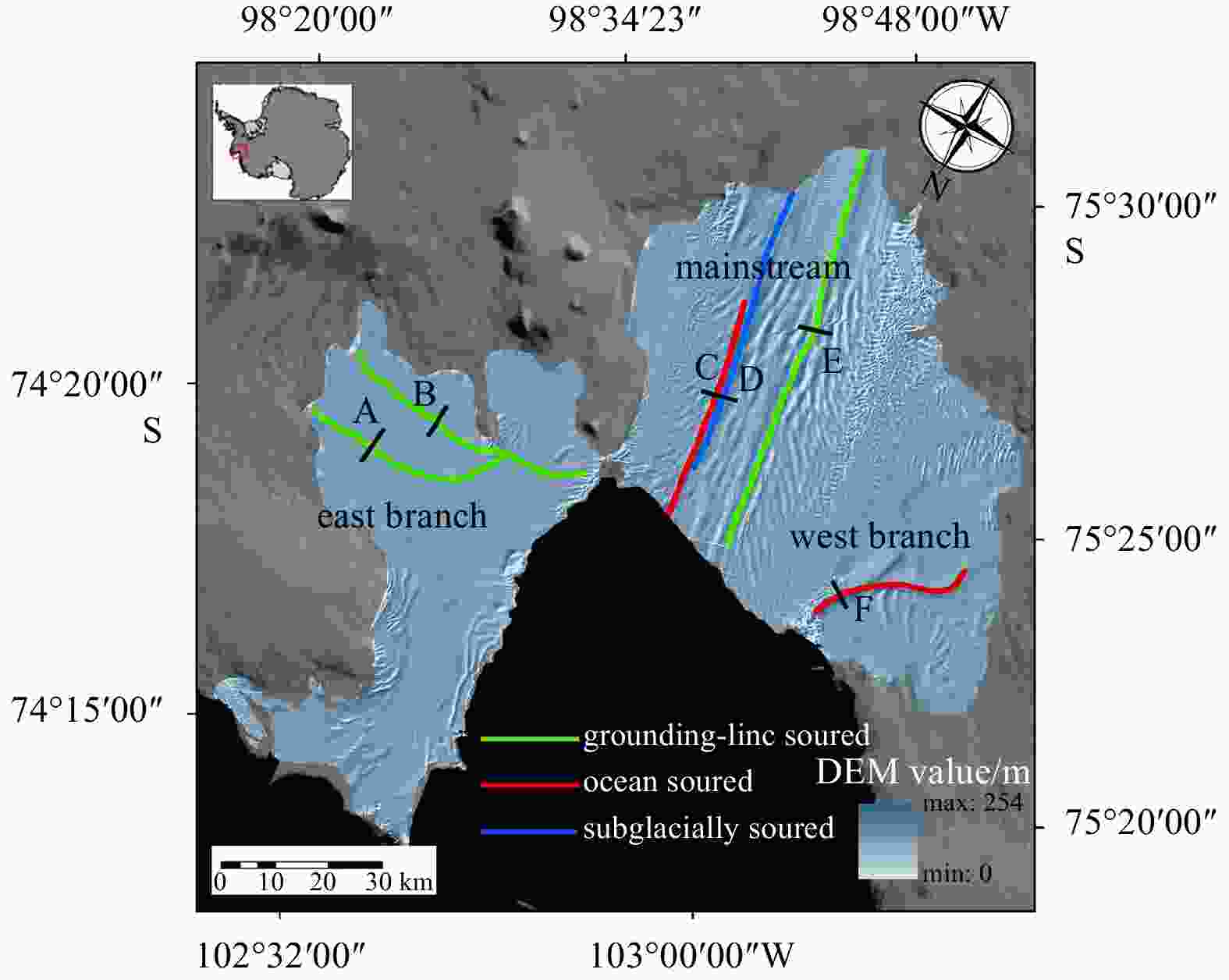
 下载:
下载:
